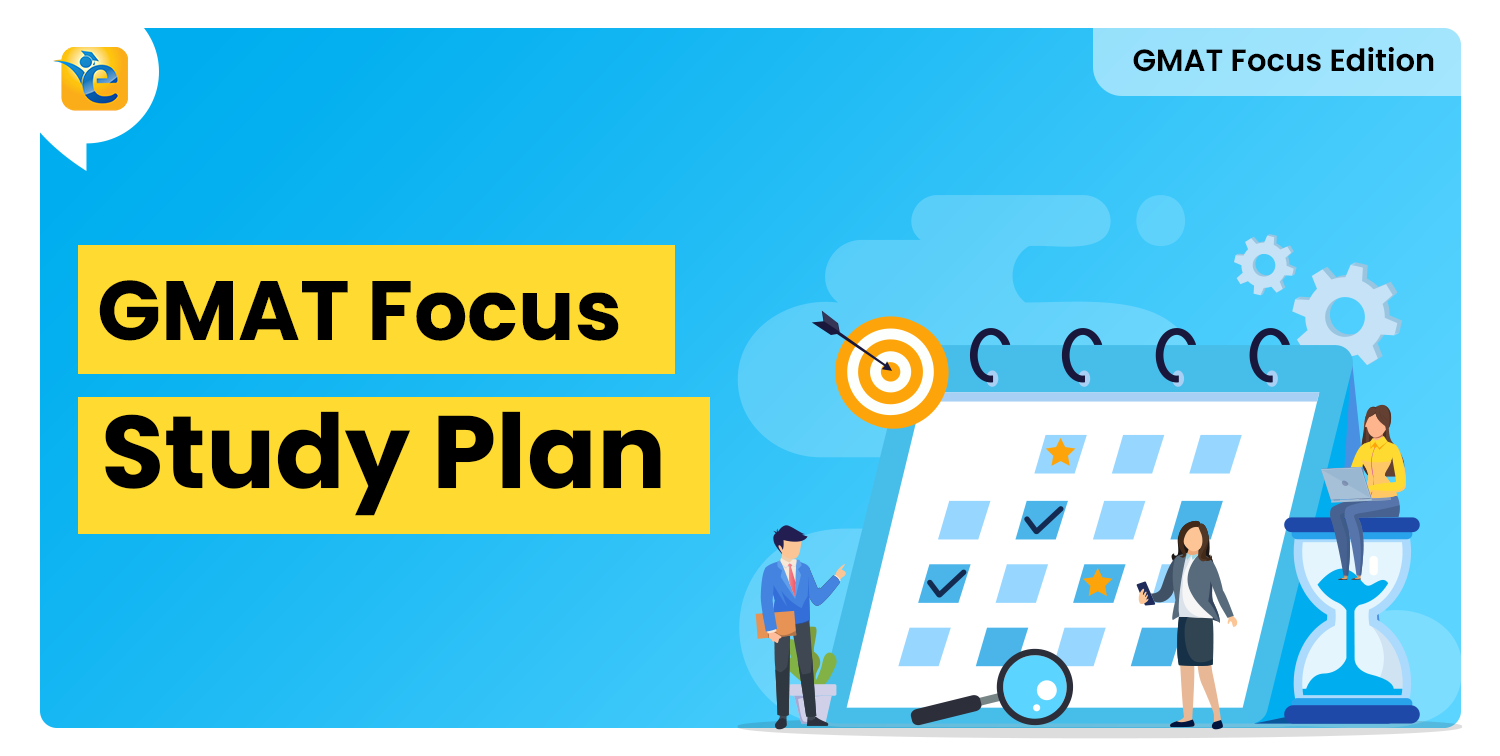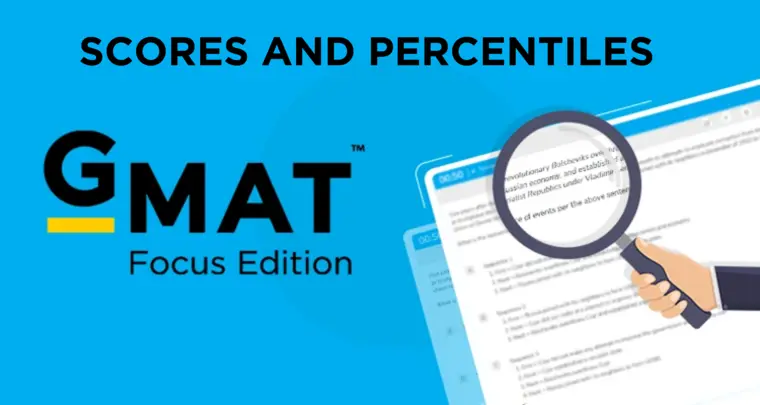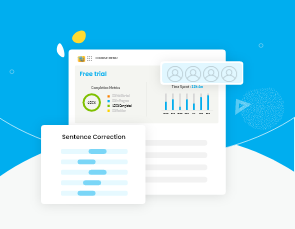Picture this: You’re halfway through a Two-Part Analysis question, making solid progress, when suddenly you realize you’ve been solving the wrong problem entirely. Or worse—you had the right approach, did the calculations perfectly, but missed a crucial detail in the final seconds and selected the wrong answer.
Sound familiar?
This isn’t a calculation problem. It’s not even a strategy problem. It’s a reading problem, and it’s costing you significant points on every TPA section.
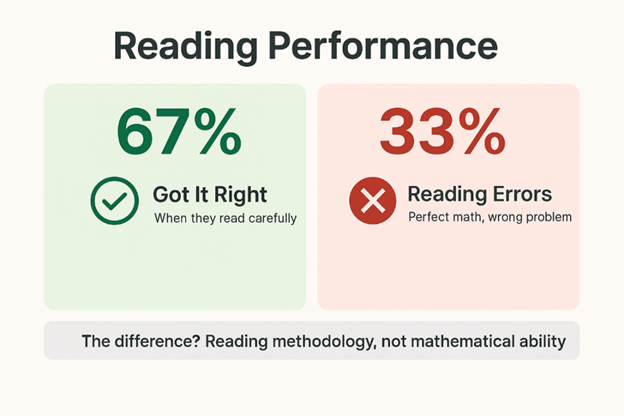
Here’s what most test-takers don’t realize: 67% of students got the first practice question right when they stopped rushing through the dataset. The other 33%? They made reading errors that had nothing to do with their mathematical ability.
⚡Discover Your Exact TPA Weaknesses in 105 Minutes
Take our fully adaptive GMAT Focus mock with 11 ability scores – including detailed Data Insights analytics. See exactly where reading errors cost you points with topic-level breakdowns for MSR, TA, TPA, and GI sections. Get actionable insights showing your path to 2-3 point improvements.
Today, I’m going to show you exactly how to eliminate the reading disasters that are sabotaging your score—and give you the proven methodology that transforms overwhelming datasets into systematic victories.
- The Hidden Crisis: Why Smart Students Fail Easy Questions
- The Complete Control Method: Your Reading Game-Changer
- Applying Complete Control: The Game Theory Example
- The Dense Dataset Challenge: European Rent Analysis
- The Complete Control Solution for Dense Datasets
- Your Reading Transformation Action Plan
- The Compound Effect: Why Reading Right Changes Everything
- Your Next Step
The Hidden Crisis: Why Smart Students Fail Easy Questions
Let’s start with a real example. Here’s an official GMAT Focus question that looks deceptively simple:
Official Question: Angelica and Basil are playing a game with the set of ordered pairs S = {(1,3),(2,1),(3,2),(4,4)}. In each ordered pair, the first number is Angelica’s preference number for that pair, and the second number is Basil’s preference number for that pair. Angelica takes the first turn and removes an ordered pair from set S. Basil takes the second turn and removes an ordered pair from among those remaining from set S. They continue taking turns until all the ordered pairs have been removed, at which time the game is over. Each player’s final score is equal to the sum of that player’s preference numbers for the ordered pairs he or she has removed.
Assume that each player always selects the available ordered pair for which his or her preference number is greatest.
This should be solvable in 90 seconds. Most students take 3 minutes. Why?
Because they’re making three critical reading errors that have nothing to do with the math:
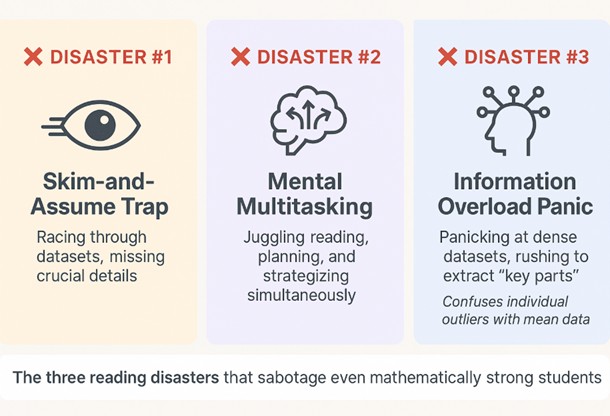
Reading Disaster #1: The Skim-and-Assume Trap
Most students see “game” and “ordered pairs” and immediately think: “Oh no, this is going to be complicated.” They start skimming, looking for shortcuts, trying to figure out what’s “important” and what they can ignore.
Here’s the truth: In TPA questions, every single word matters.
When you skim, you miss critical details like:
- “First number is Angelica’s preference” (not interchangeable)
- “Sum of that player’s preference numbers” (not all numbers)
- “For which his or her preference number is greatest” (the selection criterion)
These aren’t minor details—they’re the foundation of the entire problem.
Reading Disaster #2: The Mental Multitasking Error
While reading the dataset, most students are simultaneously:
- Trying to understand the rules
- Planning their approach
- Looking ahead to the answer choices
- Worrying about time
This mental juggling act guarantees you’ll miss something crucial.
The solution? Complete Control reading—a methodology we’ve developed that eliminates these errors entirely.
⭐Master Complete Control With 400+ Practice Questions
Experience our proven TPA methodology with 15+ hours of video lessons and 400 practice questions. Learn the exact Complete Control reading techniques through our Data Insights Enhanced Interface – specially designed for MSR, TPA, and other DI question types.
The Complete Control Method: Your Reading Game-Changer
Here’s how to read any TPA dataset with complete mastery:
Step 1: Total Mental Immersion (40 seconds)
When you start reading, your mind should be completely immersed in the dataset. You’re not thinking about anything else. You’re not planning ahead. You’re not worrying about time.
For the game theory question above, this means:
- Understanding that ordered pairs have a specific sequence (1,3) ≠ (3,1)
- Recognizing that the first number belongs to Angelica, second to Basil
- Visualizing yourself actually playing this game
- Absorbing the victory condition (sum of YOUR preference numbers only)
Step 2: Interactive Engagement
Don’t just read—interact with the scenario. For game questions, imagine you ARE the players. For business scenarios, visualize the company operations.
In our example, as you read “Angelica takes the first turn,” you should be thinking: “I’m Angelica. I’m looking at these four pairs. I want the highest first number because that’s MY preference.”
Step 3: Rule Crystallization
Before moving forward, the rules must be crystal clear in your mind:
- Turn sequence (Angelica first, then Basil, alternating)
- Selection criterion (highest personal preference from remaining options)
- Scoring method (sum of personal preference numbers from chosen pairs)
Applying Complete Control: The Game Theory Example
Let me walk you through how Complete Control reading transforms this question:
Reading with Complete Control (40 seconds):
- Angelica and Basil are playing with specific ordered pairs
- The sequence in each pair matters: (1,3) means Angelica prefers this at level 1, Basil at level 3
- They alternate turns, each picking their highest preference from what’s left
- Final scores = sum of their own preference numbers from pairs they selected
Systematic Execution (40 seconds):
- Turn 1: Angelica scans first numbers (1,2,3,4), picks (4,4)
- Turn 2: Basil scans remaining second numbers (3,1,2), picks (1,3)
- Turn 3: Angelica scans remaining first numbers (2,3), picks (3,2)
- Turn 4: Basil gets the last pair (2,1)
Final Scores:
- Angelica: 4 + 3 = 7
- Basil: 3 + 1 = 4
Total time: 80 seconds. Perfect accuracy.
If you want to go through the detailed solution, please check it out here on Neuron by e-GMAT- Angelica and Basil are playing a game with the set : Two Part Analysis (TPA)
⭐Practice 813 Official Data Insights Questions The Right Way
Apply Complete Control methodology to real GMAT questions with our integrated practice platform. Access all official MSR, TA, TPA, and GI questions with e-GMAT’s detailed solutions using the same frameworks. Create custom quizzes targeting your weak areas – no more platform juggling or inconsistent explanations.
The Dense Dataset Challenge: European Rent Analysis
Now let’s tackle a much more complex scenario—one where reading disasters are even more costly.
Official Question (Complex Dataset): Throughout a certain decade in a European city, the mean monthly rents for studio apartments varied yearly, from a low of €804 to a high of €1,173. Those for one-bedroom apartments also varied yearly, from a low of €1,060 to a high of €1,497. But some individual studio apartments rented for as little as €420 in some years, and some one-bedroom apartments rented for up to €2,262. To visually assess how the ratio of mean monthly rents for studio apartments to those for one-bedroom apartments varied yearly over the decade, Maria requires a graph with the following characteristics. The graph will have two axes of equal length, with mean rents for one-bedroom apartments shown on the horizontal axis and mean rents for studio apartments shown on the vertical axis, and with the same scale on both axes. For each year, mean rents will be plotted as a point.
Only 20% of students get this question right. Here’s why the other 80% fail:
Reading Disaster #3: Information Overload Panic
When students see this dense paragraph, they panic. They start rushing through, trying to extract “the important parts” without fully processing the relationships between different pieces of information.
The Fatal Error: They get confused about what needs to be plotted (means vs. individual outliers) and what the constraint requirements actually specify.
⚡From 20% to 80%: Your Personalized Path to DI Mastery
Struggling with complex TPA questions? Our AI-powered PSP analyzes 212+ paths to find YOUR optimal route to Data Insights improvement. Get exact hour-by-hour breakdowns for MSR, Table Analysis, and TPA preparation. Know precisely how long to reach your target DI score – built from 1000+ successful students’ data.
The Complete Control Solution for Dense Datasets
Phase 1: Structured Information Extraction (80 seconds)
Break the information into clear categories:
Data Categories:
- Studio apartment mean rents: €804 to €1,173 (this is what gets plotted)
- One-bedroom mean rents: €1,060 to €1,497 (this is what gets plotted)
- Individual outliers: €420 and €2,262 (these are NOT plotted)
Graph Requirements:
- Two axes of equal length
- Same scale on both axes
- One-bedroom rents on horizontal axis
- Studio rents on vertical axis
- Plot mean rents only
Phase 2: Constraint Analysis (15 seconds)
The key insight: Both axes must have the same range length AND must accommodate the actual data ranges.
Phase 3: Systematic Elimination (25 seconds)
Check each answer option:
- Does it provide equal ranges for both axes?
- Does it cover the required data ranges (804-1,173 and 1,060-1,497)?
- Ignore the outlier numbers entirely
The correct answer: €0 to €1,500 for both axes (range of 1,500 covers all required data with equal scales).
Your Reading Transformation Action Plan
Here’s how to implement Complete Control reading starting today:
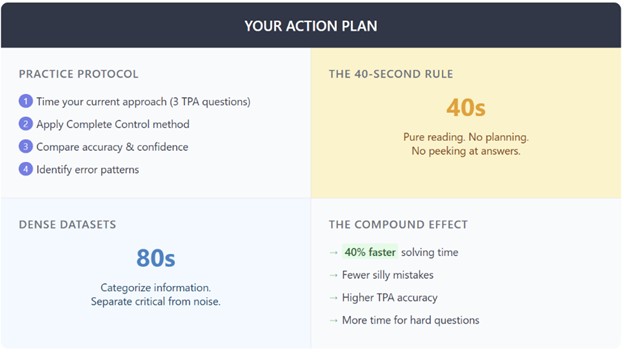
Practice Protocol
- Time your current approach on 3 TPA questions
- Apply Complete Control method on the same questions
- Compare your accuracy and confidence levels
- Identify your specific reading error patterns
The 40-Second Rule
For any TPA dataset:
- Spend exactly 40 seconds in Complete Control reading
- No planning, no strategizing, no answer choice peeking
- Pure immersion in understanding the scenario
- Trust that this investment saves time overall
Dense Dataset Strategy
When you encounter information-heavy questions:
- Extend reading time to 80 seconds (this is still faster than rushing and making errors)
- Create mental categories for different types of information
- Identify what’s being asked vs. what’s extraneous context
- Clarify all constraints before attempting execution
The Compound Effect: Why Reading Right Changes Everything
Here’s what happens when you master Complete Control reading:
Immediate Impact:
- 40% faster overall solving time (less rework and confusion)
- Dramatic reduction in “silly mistakes”
- Increased confidence during execution
Long-term Transformation:
- Higher accuracy on all TPA question types
- Reduced test anxiety (you trust your process)
- More time available for genuinely challenging questions
Your Next Step
Reading disasters are completely preventable, but only if you commit to the discipline of Complete Control methodology.
In our next article, we’ll tackle the strategic errors that trip up students who read correctly but fail to draw the powerful inferences that make complex questions simple. You’ll learn how to shortlist answer choices before you calculate and avoid the calculation traps that waste precious time.
But first, master your reading. Everything else builds on this foundation.
Practice Assignment: Find 3 TPA questions and apply Complete Control reading. Time yourself. Notice how much more confident and accurate you become when you truly own the dataset from the start.
The students who add 100+ points to their TPA scores don’t solve faster—they read better. Starting now, so do you.
⚡Measure Your TPA Transformation: Before vs After
Ready to test your new Complete Control reading skills? Take our fully adaptive mock to establish your baseline TPA accuracy. With enhanced timing analytics showing median vs actual time per question, you’ll see exactly how better reading translates to faster, more accurate solving. Plus, get subsectional gaps showing your path to 100+ point improvements.


